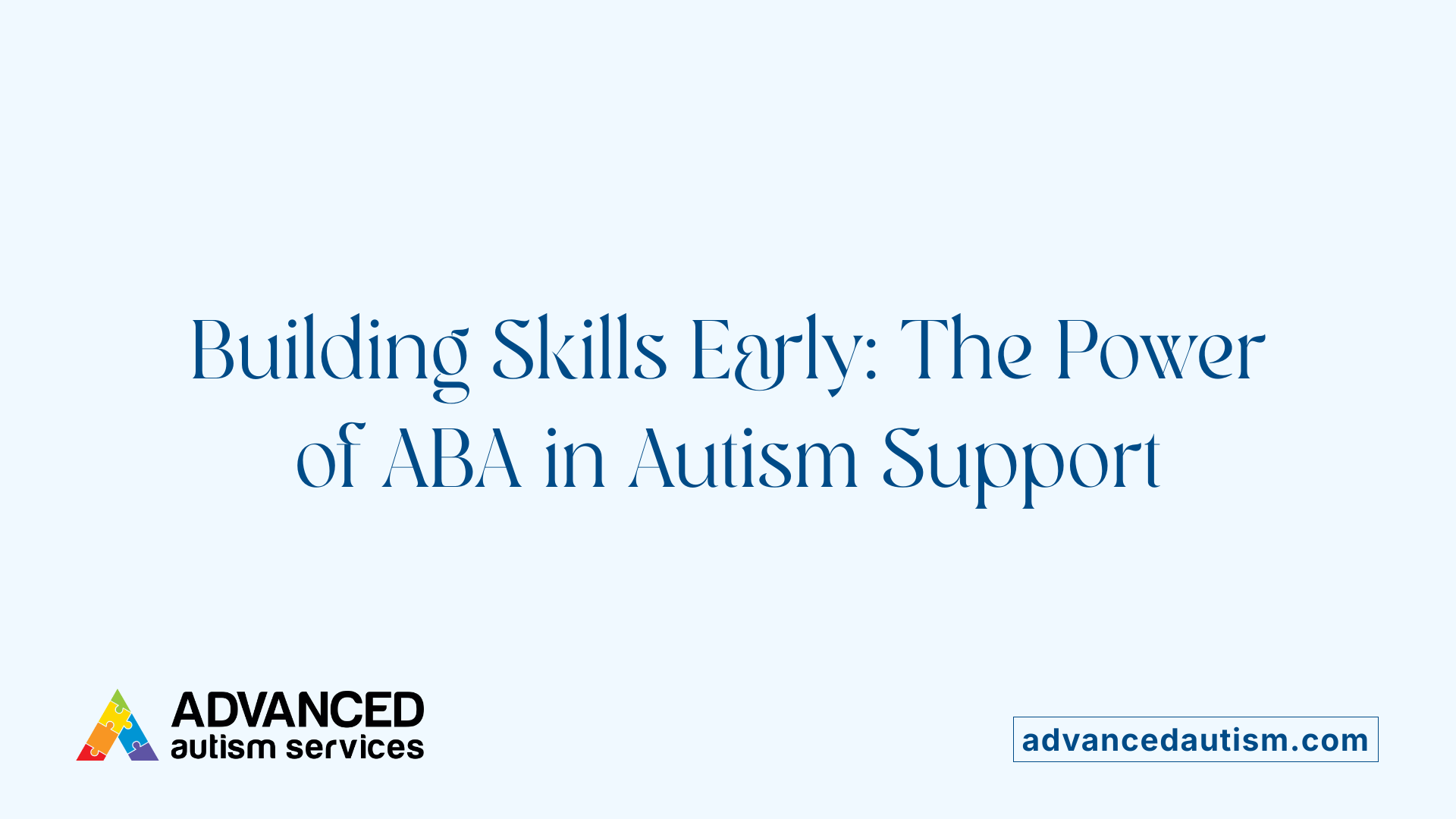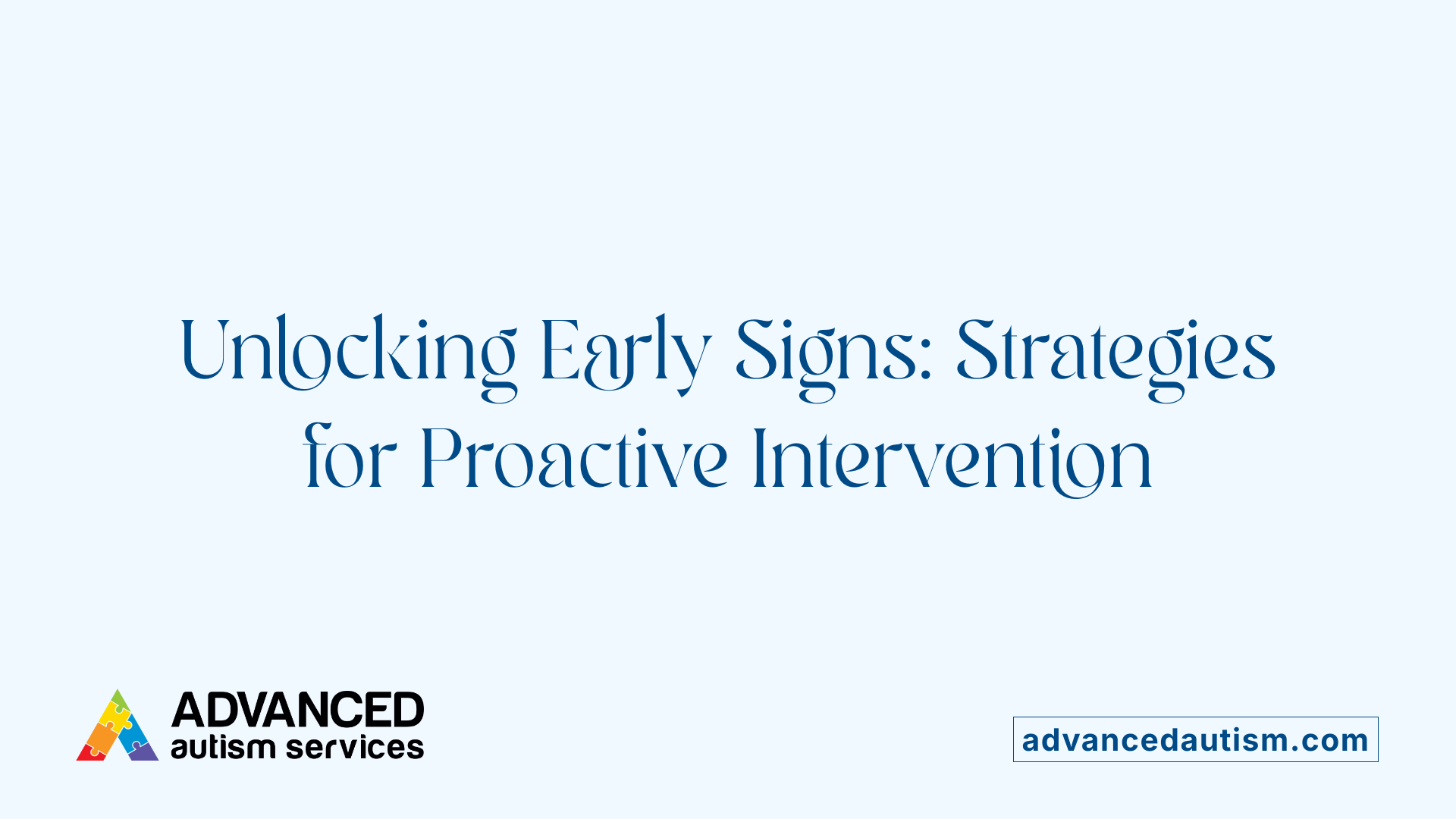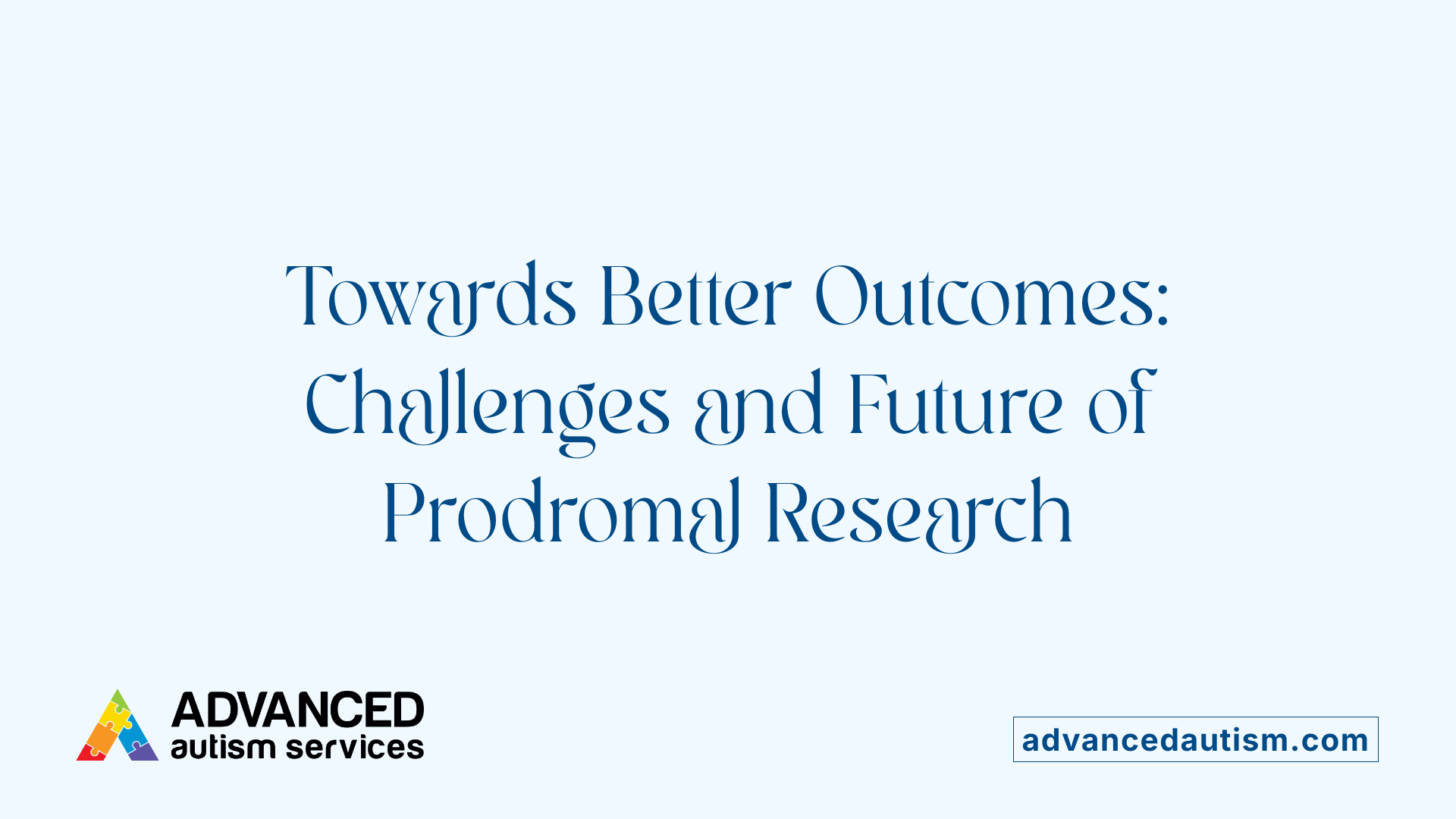Defining Prodromal Syndrome and Its Importance
Prodromal syndrome refers to the early developmental phase preceding the full manifestation of certain neurodevelopmental or psychiatric disorders, notably autism spectrum disorder (ASD) and schizophrenia. This stage is characterized by subtle signs and symptoms that signal increased risk but do not yet meet diagnostic criteria. Understanding prodromal syndromes is critical because early identification and intervention during this phase can significantly impact long-term outcomes, enhance quality of life, and guide targeted therapeutic strategies. This article explores the concept of prodromal syndrome in relation to autism and schizophrenia, detailing early signs, diagnostic challenges, and available interventions.
Prodromal Syndrome in Autism: Early Developmental Indicators and Diagnosis

What is prodromal syndrome in autism?
The autism prodrome refers to the early developmental stage before the full manifestation of autism spectrum disorder (ASD). This phase generally extends until a child is about 18 to 24 months old. During this crucial period, subtle behavioral and biological signs emerge that suggest a heightened likelihood of developing ASD. However, a definitive diagnosis typically cannot be reliably made until the child reaches this 18–24 months age range.
What early signs indicate prodromal autism?
Research has shown that while no single early indicator is consistent for all infants who develop autism, a combination or pattern of signs is often present. These include unusual social engagement, delays in communication, and atypical responses to sensory stimuli. Identifying these early behavioral markers helps guide early diagnosis and intervention efforts, which are essential in improving developmental outcomes.
How do researchers identify prodromal autism?
Multiple research methodologies are employed to detect early signs of autism. These include retrospective video coding, where early home videos are analyzed for subtle developmental differences, prospective screening from infancy, and studies focusing on infants with siblings already diagnosed with autism, who are at higher risk. Additionally, investigations into prenatal and perinatal factors, brain development variations, and biological markers provide insight into prodromal autism.
Why is autism not reliably diagnosed before 18-24 months?
The nature of autism involves complex neurodevelopmental processes that require time to manifest overt symptoms clearly. Before 18–24 months, children's behaviors and capabilities vary widely, making early diagnosis challenging. This delay emphasizes the importance of recognizing patterns of prodromal signs rather than relying on a single symptom to confirm autism.
What biological and genetic factors relate to prodromal autism?
Autism is recognized as a highly heritable condition, with early research uncovering genetic components contributing to risk. Studies examining brain development and biological markers in infancy also shed light on the early emergence of autism-related neurodevelopmental differences. These findings not only improve understanding of prodromal autism but also support the development of targeted behavioral and therapeutic interventions during the prodromal stage.
Applied Behavior Analysis (ABA) Therapy: Foundations and Role in Early Autism Intervention

What is Applied Behavior Analysis (ABA) therapy and how does it help individuals with autism?
Applied Behavior Analysis (ABA) therapy is a science-driven approach that applies principles of learning and behavior to support individuals with autism. It uses personalized plans designed to improve communication, social interactions, self-care, and daily living skills. Techniques such as positive reinforcement and structured teaching methods help encourage desirable behaviors and reduce challenges. By focusing on skill development, ABA aims to increase independence and overall quality of life.
What techniques or methods are commonly used in ABA therapy?
ABA therapy employs several effective methods, including:
- Positive reinforcement: Rewarding desired behaviors to strengthen them.
- Discrete Trial Training (DTT): Breaking down skills into small, manageable steps with clear instructions.
- Natural Environment Teaching (NET): Learning through everyday situations.
- Visual modeling: Teaching through demonstration and imitation.
- Prompting and fading: Providing assistance gradually reduced to promote independence.
- Behavior chaining: Linking together simple behaviors to perform complex tasks.
- Extinction: Withholding reinforcement to reduce unwanted behaviors.
These strategies are tailored to meet each individual’s unique needs.
Who typically provides ABA therapy and what qualifications do these professionals have?
ABA treatment is commonly delivered by Board Certified Behavior Analysts (BCBAs), who hold advanced degrees and have undergone rigorous training in behavior analysis and autism intervention. They complete supervised practical experience and pass certification exams. Behavior technicians or therapists, often with bachelor's degrees and specialized training, assist in carrying out the therapy plans in home, school, or clinical settings.
How is progress measured in ABA therapy for individuals with autism?
Progress is carefully monitored through systematic data collection measuring the frequency, duration, and accuracy of targeted behaviors. Tools like the VB-MAPP (Verbal Behavior Milestones Assessment and Placement Program) and goal-tracking sheets help quantify improvements. Visual graphs and parental input support ongoing evaluation to ensure therapy adjustments meet evolving needs.
Are there any criticisms or limitations associated with ABA therapy in autism treatment?
While ABA has proven benefits, it faces criticisms such as:
- Potential emotional distress from intensive reinforcement methods that could suppress natural behaviors like stimming.
- Risk of a rigid, one-size-fits-all approach that may overlook individual differences.
- Concerns that encouraging masking behaviors can negatively affect mental health.
- Ethical debates over the balance between behavioral control and respecting autistic identity.
These concerns highlight the importance of personalized, respectful, and flexible application of ABA.
| Aspect | Description | Additional Notes |
|---|---|---|
| Definition | Science-based therapy using behavioral principles | Focus on skill-building and behavior reduction |
| Common Techniques | Positive reinforcement, DTT, NET, prompting, fading, chaining | Tailored for individual needs |
| Providers | BCBAs and trained therapy technicians | Certified with specialized autism training |
| Progress Measurement | Data tracking, VB-MAPP, parental feedback | Supports ongoing intervention adjustments |
| Criticisms | Emotional concerns, rigidity, masking issues, ethical debates | Calls for thoughtful, individualized therapy |
Prodromal Syndrome in Schizophrenia: Signs, Risk Factors, and Assessment

What are common prodromal symptoms of schizophrenia?
Prodromal schizophrenia presents with a variety of subtle symptoms that often precede full psychosis. Common signs include anxiety, social withdrawal, nervousness, and depression. Cognitive difficulties such as problems with memory, attention, and concentration are also frequently observed. Mood changes like irritability and low self-confidence, lack of energy, and sleep disturbances further characterize this phase. Patients may sometimes experience auditory hallucinations before the onset of full psychosis. These early symptoms can be mistaken for typical adolescent behavior or other mental health issues, making early recognition challenging.
What risk factors contribute to developing prodromal schizophrenia?
Several factors increase the likelihood of entering the prodromal phase. These include a family history of psychotic disorders and traumatic experiences, which substantially elevate the risk of psychosis. Environmental exposures, such as childhood lead poisoning and infectious agents (viruses and parasites), also play a role. Substance use, particularly cannabis, has been linked to precipitating psychotic symptoms, although the direct causative effect remains uncertain. Stress and social adversity further contribute to the risk, compounding vulnerability during this sensitive period.
How is prodromal schizophrenia assessed clinically?
Assessment of prodromal schizophrenia relies on specialized tools designed to detect individuals at ultra-high risk for psychosis. The Comprehensive Assessment of At-Risk Mental States (CAARMS), the Structured Interview for Prodromal Syndromes (SIPS), and the Bonn Scale for the Assessment of Basic Symptoms (BSABS) are the primary instruments used by clinicians. These assessments evaluate symptom patterns, cognitive changes, and functional decline to guide early intervention strategies. While the DSM-5 includes Attenuated Psychosis Syndrome (APS) as a condition for further study, it is not yet officially recognized for clinical diagnosis but aids in recognizing the prodromal stage.
Prevalence and significance of early detection
Only about 25% of individuals identified as ultra-high risk progress to schizophrenia. This underscores the importance of early detection to minimize unnecessary treatment while providing support to those most likely to develop psychosis. Early intervention involving supportive therapies, coping skill development, and family involvement can improve long-term outcomes and reduce psychosocial disruptions.
| Area | Details | Impact |
|---|---|---|
| Common Symptoms | Anxiety, social isolation, cognitive deficits, mood changes, sleep issues, early hallucinations | Challenges early recognition; informs clinical screening |
| Risk Factors | Trauma, family history, environmental toxins, infections, substance use (cannabis) | Identifies vulnerable individuals; guides preventive strategies |
| Assessment Tools | CAARMS, SIPS, BSABS | Facilitates early diagnosis; supports intervention planning |
| Early Detection Significance | 25% convert to schizophrenia; early support mitigates severity and personal disruption | Emphasizes necessity of monitoring high-risk cases and tailored early interventions |
Early Intervention and Treatment Strategies in Prodromal Syndromes

Importance of Early Detection in Autism and Schizophrenia Prodromes
Early detection plays a critical role in managing prodromal syndromes in both autism spectrum disorder (ASD) and schizophrenia. Prodromal autism involves early behavioral and biological signs appearing in infancy, sometimes before 18–24 months when formal diagnosis becomes reliable. Similarly, prodromal schizophrenia is characterized by subtle symptoms like anxiety, social isolation, and cognitive changes that precede full psychosis. Identifying these early warning signs improves treatment outcomes and helps minimize disruption in personal and social life.
Current Intervention Approaches and Their Development Status
For ASD, research into prodromal interventions is still evolving. Thirteen studies, including randomized controlled trials and small case series, explore early treatment methods hoping to improve developmental trajectories. In schizophrenia, various assessment tools aid in identifying ultra-high-risk individuals; however, only supportive and cognitive therapies are currently recommended early on due to unclear pharmacological benefits.
Therapeutic Techniques Including ABA and Cognitive Therapies
Behavioral analysis therapy (ABA) is a cornerstone intervention for autism, tailored based on early detected signs. Similarly, cognitive therapies targeting coping skills and social interaction have shown benefit in prodromal schizophrenia. These therapies focus on managing symptoms, improving interpersonal relationships, and maintaining functional abilities.
Pharmacological Use and Limitations
Pharmacological treatment in prodromal schizophrenia is approached cautiously. Despite antipsychotics helping psychotic symptoms, their use during prodrome is limited due to uncertain risk-benefit profiles. In autism, no pharmacological interventions specifically target the prodromal phase, emphasizing reliance on behavioral and developmental therapies.
Role of Supportive, Family, and Educational Interventions
Supportive and family-based interventions are vital in both ASD and schizophrenia prodromes. Family involvement aids in reinforcing coping strategies and behavioral approaches. Educational strategies, including school support for cognitive and social difficulties, complement therapeutic efforts and help improve long-term outcomes.
| Aspect | Autism Prodrome | Schizophrenia Prodrome | Intervention Focus |
|---|---|---|---|
| Early Detection | Behavioral and biological signs before 18–24 months | Subtle symptoms like anxiety, social withdrawal before psychosis | Improves outcomes and minimizes social disruption |
| Intervention Status | Developing with emerging evidence from RCTs and case studies | Limited pharmacological use; emphasis on supportive care | Early intervention critical but still evolving |
| Therapeutic Techniques | Behavioral analysis therapy (ABA) | Cognitive therapies, coping skill development | Target symptoms and enhance social functioning |
| Pharmacological Treatments | Not established in prodrome phase | Used cautiously; antipsychotics for psychotic symptoms only | Limited use due to risk-benefit concerns |
| Supportive Strategies | Family involvement and early developmental supports | Family, psychosocial support, school strategies | Reinforces therapy, improves compliance and outcomes |
Challenges and Future Directions in Prodromal Syndrome Research and Therapy

Scientific advancements and current limitations
Research into prodromal syndromes such as autism and schizophrenia has seen notable progress in identifying early behavioral signs, genetic markers, and biological indicators. Studies employ diverse methodologies including high-risk sibling studies for autism and validated diagnostic tools like CAARMS and SIPS for schizophrenia. Despite these advances, diagnosis remains challenging due to the variability in symptom presentation and the overlap with normal developmental variations or other mental health issues. Furthermore, prodromal interventions are still in early stages with limited evidence on long-term efficacy.
Need for personalized and ethical approaches
Given the heterogeneity of prodromal symptoms and risk factors—ranging from genetics to environmental exposures—personalized intervention plans are essential. This approach must be balanced with ethical considerations to avoid stigmatization or unnecessary treatment, especially since not all high-risk individuals progress to full disorder. Transparent communication and supportive family involvement are crucial components.
Integration of biological, genetic, and behavioral insights
Understanding prodromal syndromes benefits from combining insights on early developmental signs, neurobiological changes, and genetic predispositions. This integrated perspective fosters comprehensive screening strategies and may enable more targeted behavioral and pharmacological therapies that address the underlying mechanisms of disease progression.
Importance of multidisciplinary collaboration
Effective prodromal syndrome research and therapy require cooperation among neuroscientists, psychologists, pediatricians, psychiatrists, and geneticists. Multidisciplinary teams can facilitate holistic assessment and early intervention programs, ensuring that various facets of the disorder and patient needs are addressed in concert.
Potential of early interventions to alter disease trajectories
Early detection and intervention hold promise for modifying the trajectory of prodromal syndromes. Interventions during infancy for autism and adolescence for schizophrenia can improve developmental outcomes, minimize functional impairments, and reduce the severity or delay the onset of full-blown disorders. Continued research into these interventions' effectiveness remains a priority for improving patient care and long-term prognosis.
The Future of Prodromal Syndrome Awareness and Care
Recognizing prodromal syndromes in autism and schizophrenia represents a transformative step in neurodevelopmental and psychiatric healthcare. Early signs often precede diagnosable conditions by months or years, offering critical windows for intervention. Advances in behavioral therapies such as Applied Behavior Analysis and structured assessments for schizophrenia are improving outcomes but remain areas of ongoing study and ethical consideration. As research evolves, the integration of genetic, biological, and environmental knowledge alongside personalized, compassionate care promises to enhance early detection and treatment, ultimately promoting better quality of life and functional independence for individuals at risk. Continued multidisciplinary efforts and increased public awareness are essential to realize the full potential of early intervention in prodromal syndromes.
References
- The prodrome of autism: early behavioral and biological ...
- Intervention during the prodromal stages of autism spectrum ...
- The prodrome of autism: early behavioral and biological signs ...
- Prodromal Schizophrenia: Identifying the Symptoms
- Prodromal Symptoms of Schizophrenia: Understanding ...
- How to Track Progress in ABA Therapy Through Reports ...
- How to Measure ABA Progress: A Guide for Ohio Families
- Is ABA Therapy Harmful?
- Is ABA therapy harmful? The controversy explained
- ABA Techniques: Strategies for Behavior Analysts - GSEP Blog



